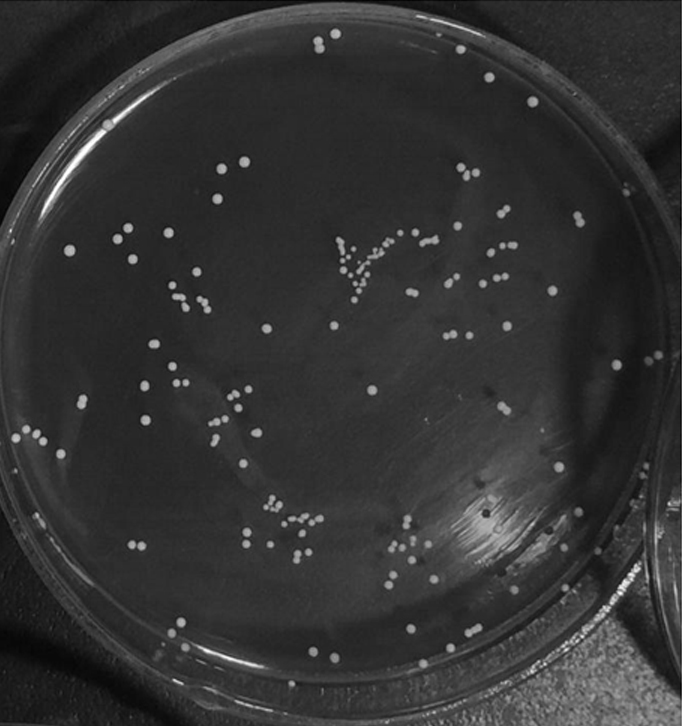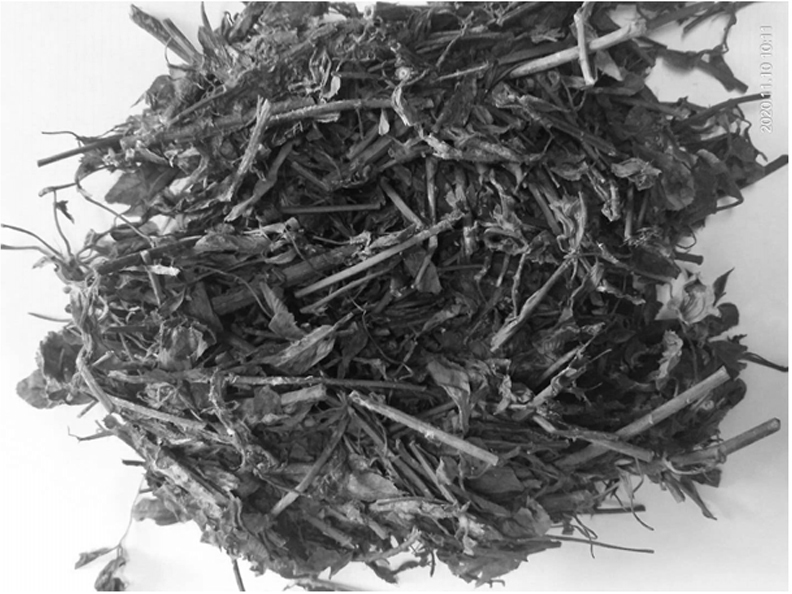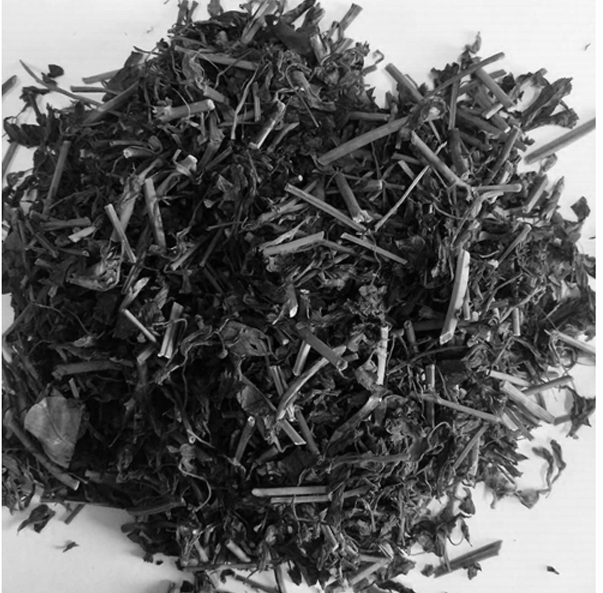Lactobacillus plantarum with fast acid production and high acid production and application thereof
A technology of Lactobacillus plantarum and acid amount, applied in the field of microorganisms, can solve the problems of unsatisfactory acid production rate and acid production amount, and achieve the effects of high positive mutation rate, growth inhibition and quality improvement.
- Summary
- Abstract
- Description
- Claims
- Application Information
AI Technical Summary
Problems solved by technology
Method used
Image
Examples
Embodiment 1
[0026] Example 1 Compound mutagenesis
[0027] 1. DES mutagenesis
[0028] Lactobacillus plantarum HBU03 was used as the starting strain, which was isolated from the sediment of the Baiyangdian River Basin in Xiong'an New District and preserved in the Microbial Diversity Research and Application Laboratory of Hebei Province. Take 9.4mL of the bacterial suspension of the strain into a sterile Erlenmeyer flask, add 10mL of pH7.0 sterile phosphate buffer solution and 0.6mL of DES solution, shake evenly, place in a constant temperature shaker at 37°C, and shake from the DES solution Adding starts timing, treats for 35min, adds 10mL25%Na 2 S 2 o 3 to stop the reaction. Take the mutagenized bacterial solution and dilute it to a suitable gradient, spread it on bromocresol purple medium, turn the culture dish upside down, and place it in a dark cardboard box, place it in a 39°C incubator for cultivation, and take it out after 4 to 6 days , Use a ruler to measure the diameter of t...
Embodiment 2
[0033] Example 2 Preparation of protoplasts
[0034] The mutant strain HBU03DV with high acid production and the mutant strain HBU03DV15 with the shortest time to reach the highest acid production were selected as two parental strains for protoplast fusion, in order to achieve the traits of large acid production and short acid production time in the same mutant strain .
[0035] 1. Take the mutant strains HBU03DV and HBU03DV15 cultured for 8 hours (mid-to-late logarithm), collect the bacteria by centrifugation (4000r / min, 5min), wash twice with LPB buffer, resuspend in LPB, and the concentration of bacteria is about 10 7 -10 8 CFU / mL, add lysozyme at a final concentration of 100mg / mL, and bathe in water at 37°C for 30min.
[0036] 2. Protoplast inactivation
[0037]Ultraviolet inactivation: Pour the protoplast body fluid of the above-mentioned mutagenized strain HBU03DV into a glass petri dish with a diameter of 6 cm, put a magnetic needle in the petri dish as a rotor and p...
Embodiment 3
[0039] Example 3 Protoplast fusion and screening
[0040] 1. Fusion of protoplasts: Take 500 μl of protoplast body fluids from the two inactivated parents, mix them, centrifuge at 3000 r / min for 20 minutes at low speed, and discard the supernatant. Resuspend in 500μL LPB, add 9 times the volume of 40% PEG6000, react at room temperature for 20min, immediately add 5mL LPB to dilute to remove the effect of PEG6000, centrifuge twice at 3000r / min, 10min at low speed, and resuspend in 100μL in the buffer. After fusion, it was spread on regeneration plate and cultured in 37°C incubator for 48h. At the same time, uninactivated protoplast fluid was applied as a control.
[0041] 2. Screening of fusion strains: After the colonies grow out, pick a single fusion strain with a sterilized toothpick into the MRS liquid medium, and after static fermentation at 37°C for 42-48 hours, use the mutant strains HBU03DV, HBU03DV15 and the starting strain HBU03 was used as a control to detect the a...
PUM
 Login to View More
Login to View More Abstract
Description
Claims
Application Information
 Login to View More
Login to View More - R&D
- Intellectual Property
- Life Sciences
- Materials
- Tech Scout
- Unparalleled Data Quality
- Higher Quality Content
- 60% Fewer Hallucinations
Browse by: Latest US Patents, China's latest patents, Technical Efficacy Thesaurus, Application Domain, Technology Topic, Popular Technical Reports.
© 2025 PatSnap. All rights reserved.Legal|Privacy policy|Modern Slavery Act Transparency Statement|Sitemap|About US| Contact US: help@patsnap.com



